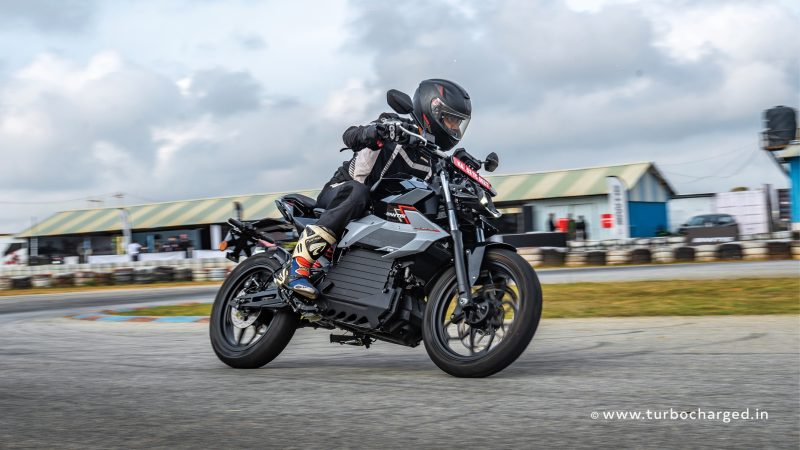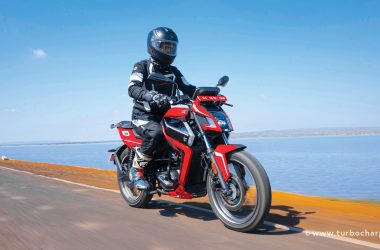The Orxa Mantis first showed up at the 2019 India Bike Week (IBW) and grabbed quite a few eyeballs thanks to its unconventional yet striking design, swappable battery tech and promised to deliver great performance on paper. The start-up was at IBW stage with the updated version of the e-bike in 2022 with better performance figures and fixed battery pack. And now, a year later, Orxa has finally launched the Mantis. A lot has changed in the performance e-bike segment since it was first showcased in 2019 and its primary competitor, the Ultraviolette F77 has already made a name for itself in the market. We briefly rode the pre-production units of the Mantis around a go-kart track and here are our first impressions.
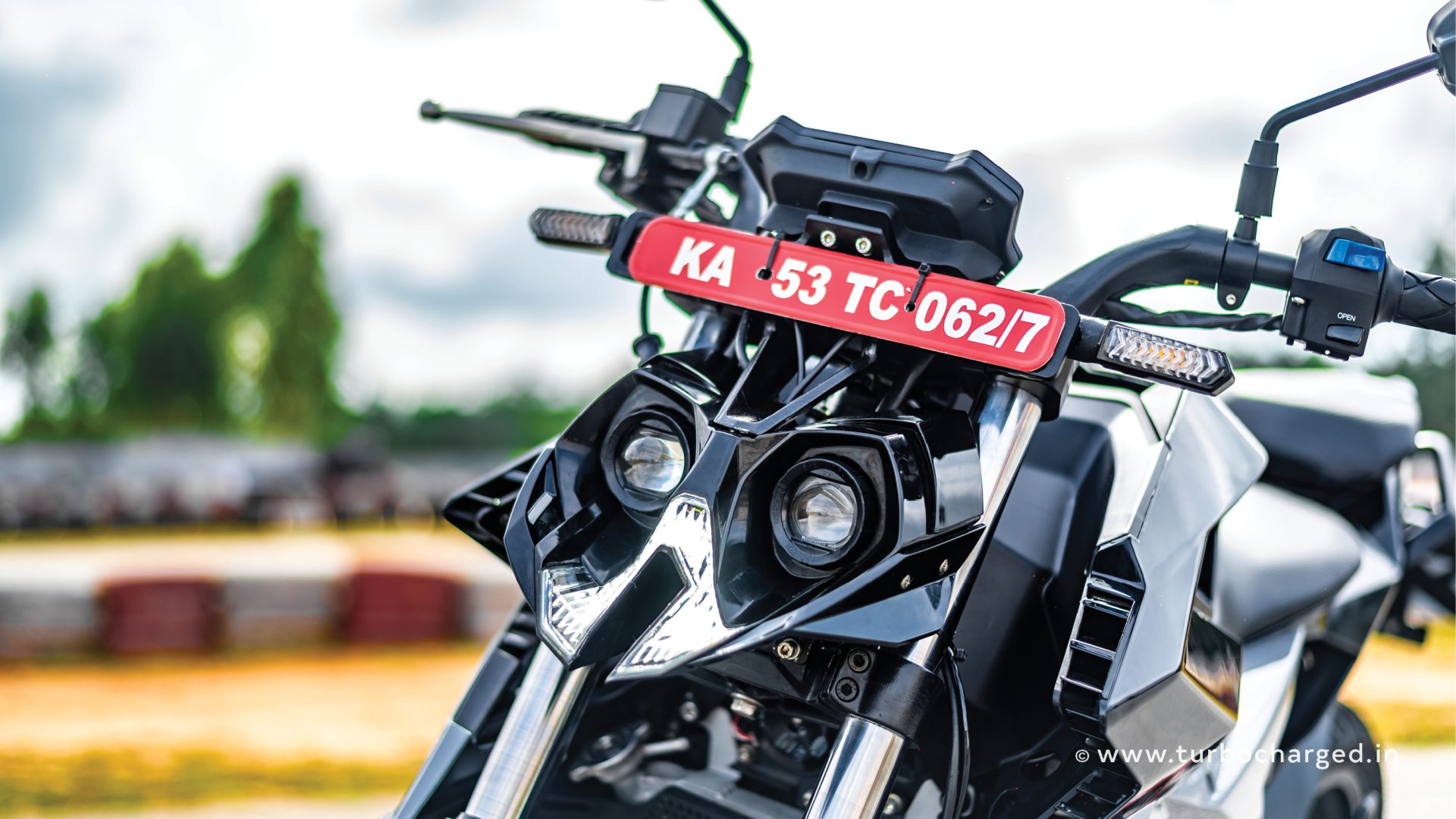
The design continues to be eye-grabbing, especially from the front, which gets dual-projector LED headlamps which might even remind you of Bumblebee from Transformers. Things are busy from the side with lots of cuts and sharp design bits. Other interesting design touches include a hollow section in the middle where you’d otherwise find a fuel tank on a conventional ICE motorcycle . The fit and finish levels are not consistent as the plastic bolted on the aluminium frame didn’t feel as sturdy as I would have preferred. However Orxa says these issues will be sorted in the production version.
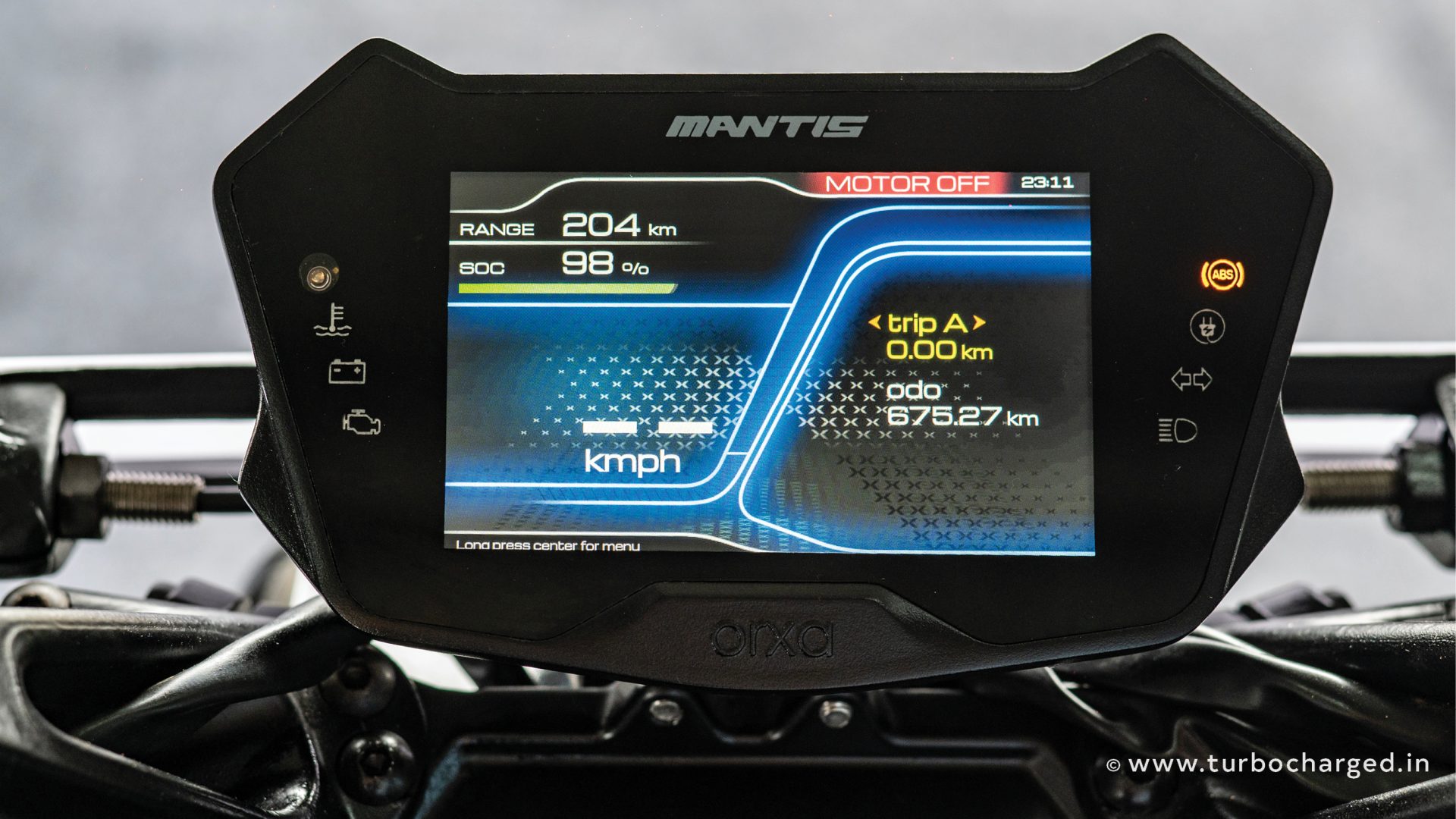
Feature list includes all-LED lighting, a five-inch TFT instrument cluster with Bluetooth connectivity and navigation, which can be toggled using a mode switch placed on the left handlebar. The display itself looked legible under overcast conditions with big fonts for important data like the speed, range and battery status. The switchgear quality is decent but could have been better considering the high asking price.
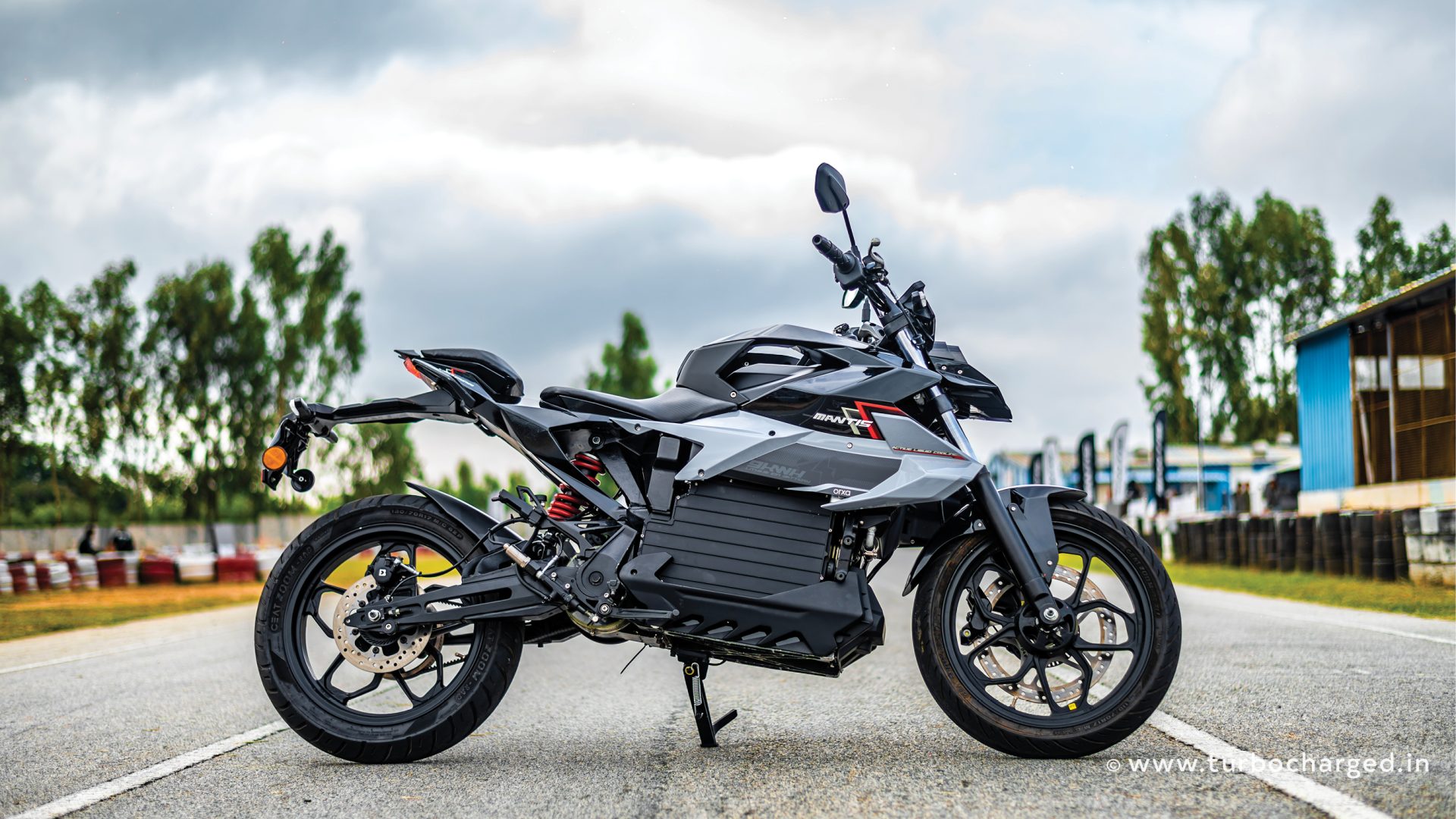
There’s only one variant of the Mantis on offer and it gets a 27.5PS mid-mounted liquid-cooled BLDC motor that produces a peak torque of 93Nm, and the company claims a 0-100kmph time of 8.9 seconds and top speed of 135kmph. There are no riding modes on offer, though. The track didn’t have a straight long enough to test these claims, but it gave us a fair idea of its acceleration. Orxa has tuned the motor for a relaxed acceleration up to 20kmph so the ample amount of torque doesn’t catch you by surprise. Things get quicker as you cross that mark, but never feel intimidating at any point. Riding an e-bike around a track for the first time, it took me some time to find the throttle’s sweet spot, where I could keep it slightly open in corners without the regen kicking in, but the overall throttle response is quite good.
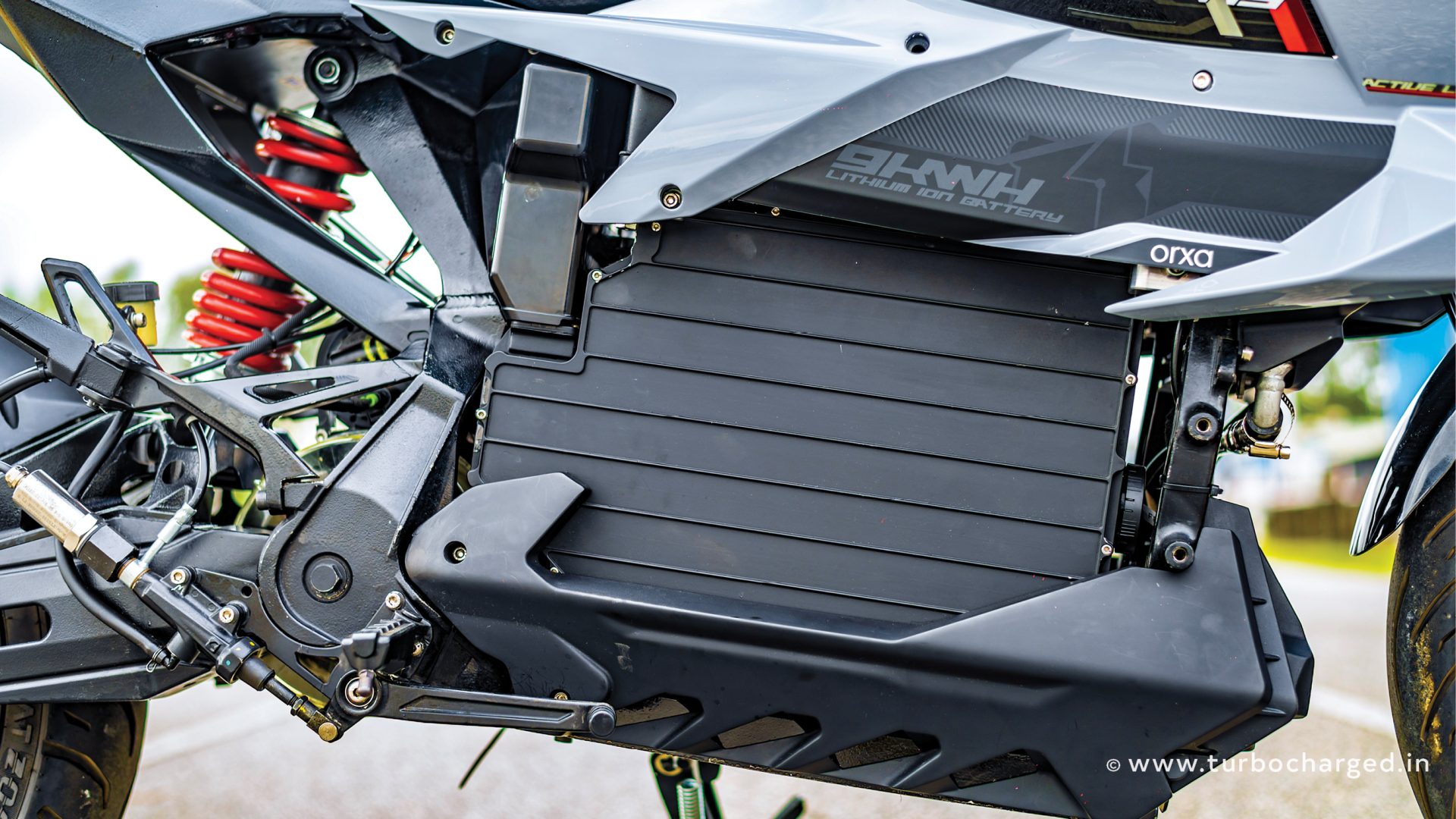
Powering the Mantis is an 8.9kWh battery pack that is capable of delivering a range of 221km (IDC claimed) on a single charge. We would reserve our judgement on this until we get to spend more time with the motorcycle. While we didn’t face any heating issue on our unit, a few others did, resulting in reduced performance. There are two charging options on offer, a 1.3kW standard charger that can charge the e-bike from 0 to 80 percent in five hours and a faster 3.3kW charger that can do the same in 2.5 hours.
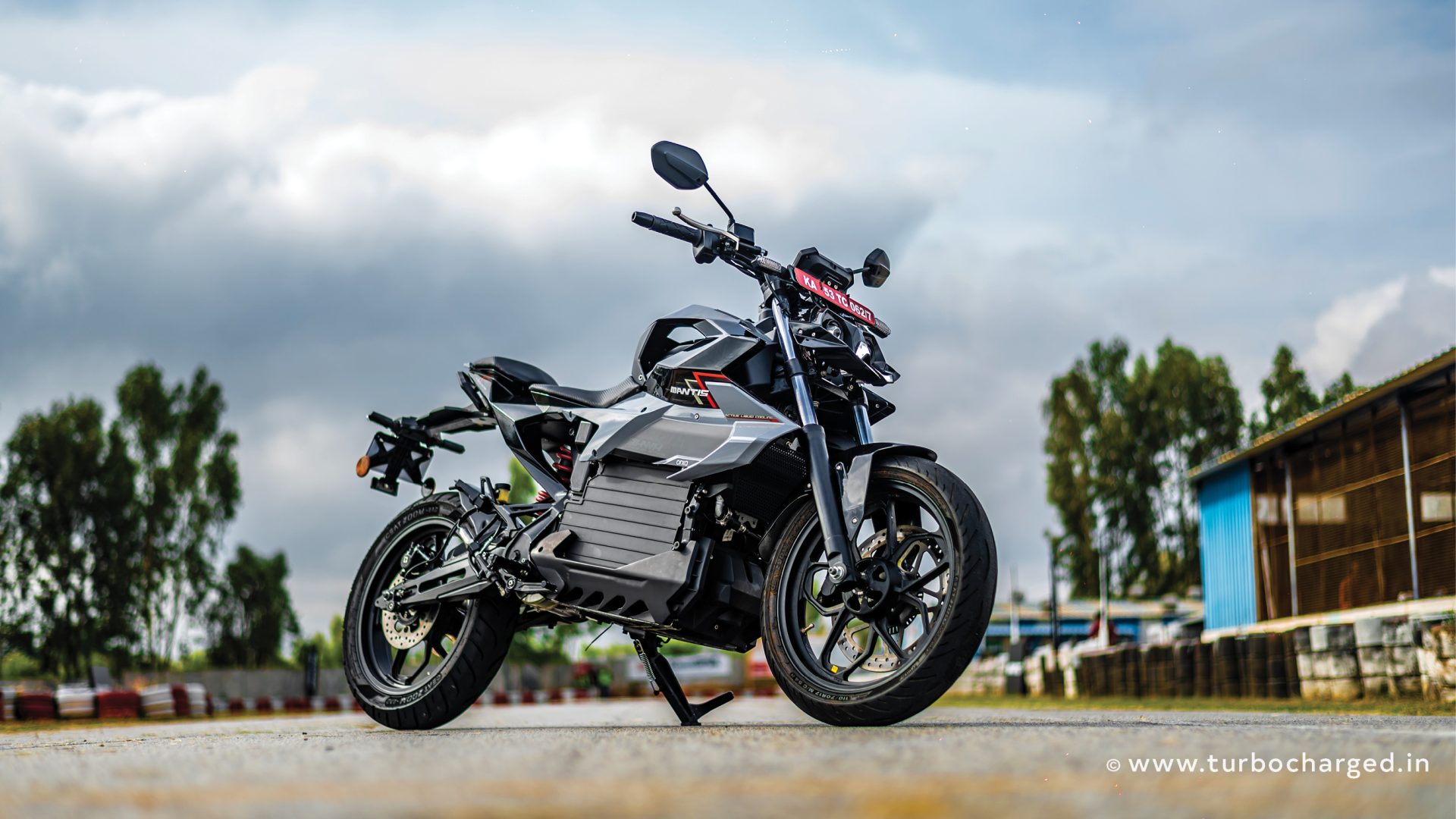
Speaking of the chassis, the Mantis is underpinned by an all-aluminium frame, sub-frame and even the swingarm is made up of aluminium, which means the Mantis is relatively light at 182kgs. The suspension duties are handled by 41mm telescopic front forks and a preload adjustable monoshock at the rear. Out on the track, the Mantis with its 110-section front and 130-section rear tyres, felt stable around corners, but it isn’t as agile or flickable as we would like it to be. The low speed manoeuvrability isn’t great either as it takes a bit of effort to turn the handle-bar due to its front heavy-nature. The braking is taken care of by front and rear disc brakes with only single-channel ABS on offer. The braking combined with regen does a decent job shedding speeds but more bite from the front would help induce more confidence. Also dual-channel ABS should have been offered given its price and performance.
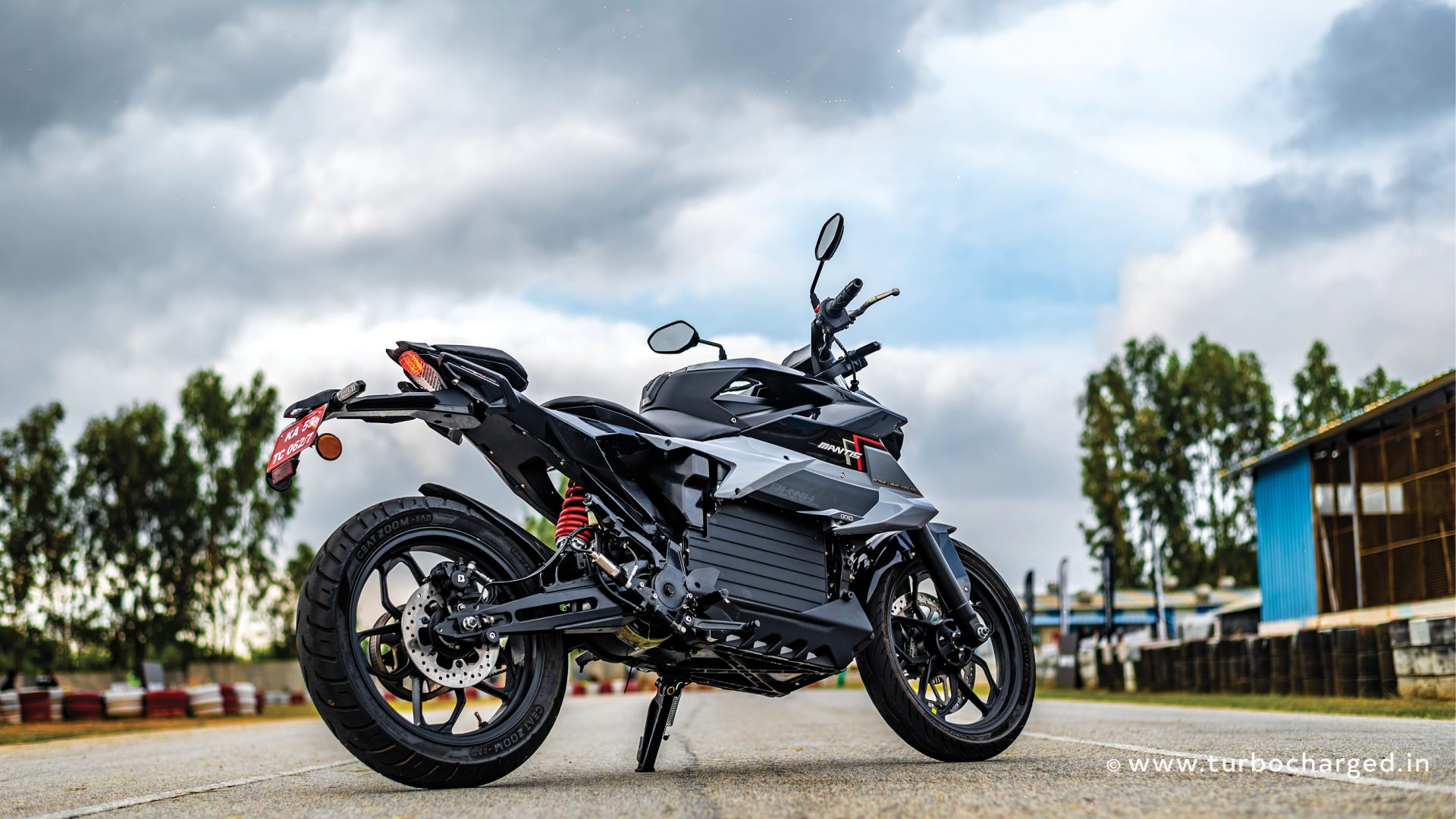
At Rs 3.60 lakh, ex-showroom, Bengaluru, the Orxa Mantis is an expensive proposition. Issues like inconsistent build quality and mechanical or electronic gremlins, don’t help matters either. Its immediate rival, the Ultraviolette F77, feels a lot more polished and complete. Orxa promises us that these issues will be fixed before the deliveries commence in April 2024. The Mantis does impress with its lightweight build and striking looks, but has a long way to go to live up to its potential as an engaging electric roadster.





